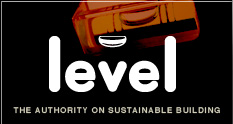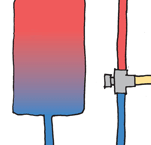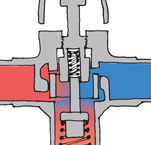Water
Water use, sustainability, and efficiency by choosing quality systems and materials, and providing environmentally friendly solutions.
Storage cylinders
Hot water storage systems can use very energy-efficient and low-carbon heating sources such as solar energy or a heat pump. They must be properly sized so that the household does not run out of hot water.
Find out about:
- code requirements
- cylinder size
- cylinder location
- cylinder insulation
- controlling Legionella bacteria
- tempering heated water
- specific requirements for gas storage water heaters.
Code requirements
Under Building Code clause G12 Water supplies, hot water systems must provide water in a manner that allows for the control of Legionella bacteria but minimises the risk of scalding. Adequate hot water must be provided for utensil washing and personal washing/bathing.
Acceptable Solution G12/AS1 requires that storage cylinders must:
- be large enough to meet draw-off demand
- have sufficient recovery capacity to be ready for the next draw-off demand
- include a non-return valve (unless supply is from a water tank)
- have temperature controlled by a thermostat (electric and gas heating).
A storage cylinder must be heated to at least 60ºC daily to remove the risk of microbial contamination in the water.
NZS 4305:1996 Energy efficiency – domestic type hot water systems sets the energy efficiency requirements for hot water storage cylinders including:
- maximum standing heat loss (kWh per day) for electric hot water cylinders of different sizes
- maximum gas consumption rate and minimum thermal efficiency for gas hot water cylinders.
Cylinder size
The hot water storage cylinder must be large enough to provide for a household’s peak hot water demand, but more water will be heated than needed if the cylinder is too large. The appropriate size depends primarily on the number of people in the household. Typical hot water usage is in the order of 40–60 litres per day per person.
Significant standing losses occur from the cylinder and during the transfer to the point of use. For greater efficiency, hot water storage cylinders should be short and broad rather than tall and slim, as this reduces the surface area. Cylinder size varies enormously, around 460–810 mm diameter, but most are typically around 480, 550 or 580 mm.
Taller cylinders may be better where heat is exchanged to and from other sources (such as a solar collector or wetback) to the cylinder. For example, a wetback may draw cold water from the bottom of the cylinder and return it as hot water to the top of the cylinder. A taller cylinder will allow a greater temperature difference to be maintained and therefore improves the effectiveness of the wetback.
Cylinder location
Minimise heat loss through the hot water pipes by locating the cylinder as close as possible to the outlets where the majority of hot water is used.
The cylinder will lose more heat in a cold location (e.g. when located outside the insulated building envelope) than a warm one (such as in the middle of the house or in a well-insulated space). Locating the cylinder in a cupboard will help to retain heat. Some heat pump water heaters are single integrated units that can be installed outside the building, saving space inside.
Other design factors to consider include:
- hot water system pressure – low or mains pressure
- provision of sufficient space for the cylinder
- access to replace the cylinder
- plan spaces where hot water will be used to be in close proximity – if an isolated hot water outlet is required, or hot water demand will be low, a continuous flow water heater may be a better option
- placement in relation to solar collectors or solid fuel burners where these are used for water heating.
Cylinder insulation
Maximise energy efficiency by:
- wrapping the cylinder with additional insulation
- insulating the hot water pipework.
Electric storage water heaters installed since 2002 must have ‘A’ grade insulation. These have a layer of insulation of around 50mm between the water jacket and the outside of the cylinder. Cylinders that were installed prior should have insulation in the form of a cylinder wrap added. Any cylinders that are warm to the touch would benefit from having a cylinder wrap added.
Widely available as DIY kits, cylinder wraps are commonly made of polyester, fibreglass or sheep’s wool insulating blanket with a foil jacket on the outside.
Controlling Legionella bacteria and tempering heated water
To prevent the growth of Legionella bacteria, stored water should be heated to not less than 60°C at least once a day. If the thermostat control is set above 60°C, hot water storage systems are not at risk of Legionella growth.
If the hot water storage system is partially heated by solar power or heat exchange system (wetbacks or solar heat transfer system), the temperature must be boosted at least 60°C or higher on a daily basis.
Tempering heated water
The Building Code requires that hot water be delivered at a temperature that avoids the likelihood of scalding. As water heated to 60°C or more can cause serious burns, water must be tempered before it is delivered to users though taps and other outlets.
Acceptable Solution G12/AS1 sets maximum temperatures for water delivered to sanitary fixtures used for personal hygiene. For most types of building, the maximum temperature is 50°C for outlets such as basins, baths and showers. The limits are lower for buildings such as hospitals and schools.
The maximum water temperature for sanitary fixtures for personal hygiene in housing was reduced from 55°C to 50°C in the amendment to G12/AS1 in November 2023, with a 12-month transition period.
For kitchen sinks and laundries, maximum temperatures of around 55°C to 65°C are acceptable.
Temperatures can be reduced to acceptable levels by installing:
- a tempering valve, or
- a thermostatic mixing valve.
A tempering valve is installed in the hot water line close to the cylinder and has a cold water connection to provide a pre-set hot water temperature at fixtures. Valves are factory pre-set but are able to be adjusted to cater for specific temperature requirements.
As water may be delivered at any temperature to non-personal hygiene fixtures such as sinks and laundries, a tempering valve is not required to these fixtures. However, if a wetback water heater or other uncontrolled heat source is used, tempering the supply to all fixtures is good practice.
Most dishwasher and washing machine manufacturers may require the installation of a tempering valve for warranty purposes where the unit does not heat its own water.
Specific requirements for gas storage water heaters
Gas storage water heaters must have:
- adequate ventilation of the cylinder
- a flue to remove exhaust gases.
They must be:
- serviced annually
- flushed out regularly to remove water sediment at the bottom of the cylinder
- checked to ensure that vents are not blocked.
All gas water heaters sold in New Zealand must comply with minimum energy performance standards (MEPS).
Updated: 02 November 2023



